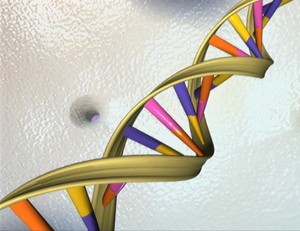The development of biologicals has experienced continuous growth over the past three decades. The expiration of patent protection for many biologicals has led to the development of biosimilars in many countries around the world. This paper reviews the literature on biosimilars and covers their therapeutic status, clinical trials, approved biosimilars and regulatory guidelines in Japan, South Korea and Malaysia [1].

The literature suggests that biosimilars are comparable but not identical to the reference product. They are not a generic version of an originator product and do not ensure therapeutic equivalence. Biosimilars present more challenges than conventional generics and their marketing approval is also much more complicated. Since its beginnings, the biopharmaceutical industry (which manufactures products of biological origin) has been constantly evolving in order to meet the new therapeutic needs of society. This evolution has generally been driven by strong investment in research and development, which has allowed it to be recognized as a continuously growing industry, based on innovative products with high margins and returns. However, this vision is far from representing the current situation of the industry. It is now subject to strong government pressure and erosion of product prices, as a result of the growth of the generics industry and its immersion in a highly competitive environment in all therapeutic areas, with no single company having a dominant role in the market [2].
This situation has become worse due to loss of exclusivity as patents expire, leading to a deteriorated in product prices as time passes. In 2012, 7% of worldwide sales (US$53 billion) were at risk as a result of the free entry of generics, which compete directly with the originator brands, forcing them to lower their prices or, even worse, to stop producing them. By 2020, it is expected that this loss of profitability will reach US$259 billion, although the predicted erosion post-expiration is expected to be softer.
The US, Europe and Japan are the countries that invest the most in research and development of biologicals. Therefore, they are expected to become the most attractive markets for the development of biosimilars. Sackman and Kuchenreuther [3] estimate the global biosimilars market earned revenues of about US$1.3 billion in 2013. The main biologicals that have attracted the development of biosimilars are Avastin (bevacizumab), Enbrel (etanercept), Herceptin (trastuzumab), Humira (adalimumab) and Rituxan (rituximab), which together generate more than US$50 billion annually.
The costs involved in developing a biosimilar range from US$100 to US$200 million, in contrast to that of the originator biological whose cost varies from US$800 million to US$1.3 billion. This difference may allow a price reduction of between 10% and 35% in comparison to the original molecule. In Europe, where 20 biosimilars are authorized [4] and competing with the originator biological, they are sold at a price that is 30% lower than that of the original drug.
The first biosimilar Zarxio (filgrastim-sndz made by Sandoz) was approved in the US in March 2015 [5]. This, along with the ongoing patent expiration of 12 of the most important biological products sold in the country, is expected to drive biosimilars penetration in the coming years. The main manufacturers trying to enter the biosimilars market in the US are Hospira, Mylan, Amgen, Pfizer and Sandoz [3].
While the biosimilars market has been dominated at this early stage by Europe and the US, it is slowly emerging in countries with biopharmaceutical infrastructure and companies. However, it is essential to consider some aspects in these countries such as regulations, guidelines for products that fit the local market, the development of therapeutic areas, the economic margins that can be obtained from manufacturing – since they are less costly they also have a smaller profit margin than the originator products, access to the necessary infrastructure, potential strategic alliances. By addressing these issues, hopefully in the near future, the development of biosimilars can be converted into an appropriate economic model for countries that are emerging in these technologies. In this context, this paper presents an overview, the evolution and an assessment of the regulations, while it also discusses the beginnings and development of biosimilars in Japan, South Korea and Malaysia.
Conflict of interest
The authors of the research paper [1] did not provide any conflict of interest statement.
Abstracted by Tomas Gabriel Bas, Director of the Institute of Innovation based in Science at the University of Talca, Chile.
Related articles
Regulations for biosimilars in South Korea
Strategy for biosimilars in China
References
1. Bas TG, Oliu Castillo C. Biosimilars in developed and developing East and Southeast Asian countries: Japan, South Korea, and Malaysia-overview, evolution, and regulations assessment. Biomed Res Int. 2016;2016:5910403. doi: 10.1155/2016/5910403. Epub 2016 Apr 24.
2. IMS Institute. The global use of medicine: Outlook through 2017. November 2013.
3. Sackman J, Kuchenreuther M. The bullish outlook for bioismilars. BioPharm International 2015;28(2):38-41.
4. GaBI Online - Generics and Biosimilars Initiative. Biosimilars approved in Europe [www.gabionline.net]. Mol, Belgium: Pro Pharma Communications International; [cited 2016 Aug 19]. Available from: www.gabionline.net/Biosimilars/General/Biosimilars-approved-in-Europe
5. GaBI Online - Generics and Biosimilars Initiative. EU guidelines for biosimilars [www.gabionline.net]. Mol, Belgium: Pro Pharma Communications International; [cited 2016 Aug 19]. Available from: www.gabionline.net/Guidelines/EU-guidelines-for-biosimilars
Permission granted to reproduce for personal and non-commercial use only. All other reproduction, copy or reprinting of all or part of any ‘Content’ found on this website is strictly prohibited without the prior consent of the publisher. Contact the publisher to obtain permission before redistributing.
Copyright – Unless otherwise stated all contents of this website are © 2016 Pro Pharma Communications International. All Rights Reserved.








 0
0











Post your comment